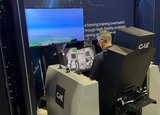Climate change is beginning to affect every aspect of human activity and this impact is only likely to increase. Defence is no exception to this.
The recent UK House of Commons Defence Committee (HCDC) report Defence and Climate Change, published in August, opens with the statement: ‘In January 2023 the World Economic Forum listed climate change as the cause of the top six most severe risks to the planet over the coming decade. This directly matters to defence.’
While this will be felt across all defence activities, its impact on training is likely to be significant. The most obvious
























